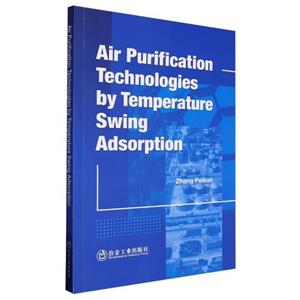Chapter 1 Adsorbent Materials
1.1 Common adsorbent types
1.1.1 Silica gel
1.1.2 Zeolite molecular sieve
1.1.3 Activated alumina
1.2 Equilibrium adsorption capacity
1.3 Adsorption isotherm models
1.3.1 Type I isotherm equations
1.3.2 Type Ⅱisotherm equations
References
Chapter 2 Extended Langmuir Model for Predicting Multilayer Adsorption
2.1 Model development
2.2 Example analysis
2.2.1 Example 1:water vapor adsorption on activated alumina
2.2.2 Example 2:water vapor adsorption on zeolite 13x
2.3 Conclusions
Nomenclature
References
Chapter 3 Principle and Numerical Simulation of Temperature Swing Adsorption Air Pre-purification Units
3.1 The principle of air pre-purification units
3.1.1 Adsorbers
3.1.2 The switching cycle
3.1.3 Heating method
3.2 Numerical simulation of air pre-purification process
3.2.1 Physical model
3.2.2 Conservation equations
3.2.3 Mass transfer calculations
3.2.4 Heat transfer calculations
3.2.5 Isotherm equation selection
3.2.6 Adsorption equilibrium data correlation
3.2.7 Initial conditions,boundary conditions
3.2.8 Cyclic steady-state conditions
3.2.9 Numerical method
3.3 Case study
3.3.1 Case introduction
3.3.2 Results and discussions
Nomenclature
References
Chapter 4 Operating Strategies of Temperature Swing Adsorption Air Pre-purification Units
4.1 Operation strategies of air pre-purification units for safe production
4.1.1 Analysis of the reasons for CO? exceeding the standard
4.1.2 Adsorbent bed filling and its effect on purification performance
4.2 Operation strategies of air pre-purification units for varying conditions
4.2.1 Analysis of the impact of adsorption inlet gas parameters
4.2.2 Analysis of the effects of regeneration inlet parameters
4.3 Potential multi-adsorber process organization for air pre-purification units
References
Chapter 5 Three-bed Temperature Swing Adsorption Process for Air Pre-purification
5.1 Process description
5.1.1 The two-bed TSA-APU and its energy-saving potential

















